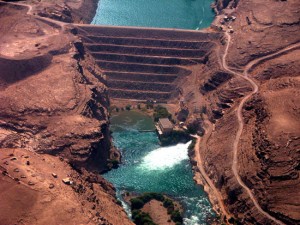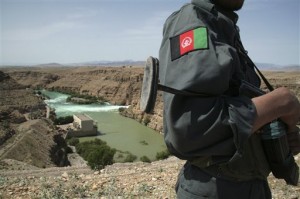“We won’t send you anyw here dangerous.”
here dangerous.”
The Security Manager’s Afrikaner accent did little to comfort me. Something about his stiff-necked posture, flawless coiffure and narrow eyes sharpened my awareness of the arrogance underpinning his words. How dare you question my authority, my knowledge of safety and security!
Had his track record proven otherwise, I may have been more trusting. But in the four years as head of security for this US construction and engineering firm, 350 Afghan workers had been killed, at least two ex-pat engineers had lost their lives and several others wounded, three multi-million dollar helicopters destroyed and one pilot shot to death — and I did not want to be the next statistic.
After nearly 30 years in the aviation industry, including the last decade spent flying in countries immersed in or recovering from civil war — Sudan, Bosnia, East Timor, Haiti — I felt justified standing my ground.
“Your concept of aviation safety is just too far removed from reality,” I said. “If the weather forecast is reported as 1/4 mile in rain and 100 knot winds, we don’t have to fly there to prove the forecast wrong.”
The Security Manager raised his arms in disgust. “Then what do we do? What do you need before you’ll fly to the Dam?”
I hadn’t come to Afghanistan to fly into an active combat zone. And the Kajaki Dam—the location he wanted us to fly—was indeed in an active combat zone. In fact, in 2007 it had been dubbed the “most dangerous place on earth” by several watchdog agencies. Just reading Google News each day confirmed that—British soldiers who were assigned to protect the dam located in the Helmand Province were taking fire every day; casualties were mounting on both sides.
Yet here was our customer threatening to cancel the contract if we didn’t fly to the Dam! Something just wasn’t right.
____
To many flying a helicopter in hostile environments is sheer lunacy. But pilots do it all the time, and they do it safely. Thousands of flights are routinely carried out over the North Sea, one of the most hostile environments on earth. Medivac and Search and Rescue crews expose themselves to a hostile environment on virtually every mission, whether it is a remote scene call at night, a flight out over a stormy dark ocean, or frequent landings at inner-city hospital helipads.
Procedures have been developed over the years to mitigate specific operational risks. And when operating in war zones, strict adherence to all safety procedures is a necessity.
Reliable and trustworthy information is the cornerstone of any risk mitigation procedure. Clients who work in unsettled countries will have their own private security force under contract to gather intelligence, develop strategic plans, offer advice on how to operate with maximum safety and efficiency. Staffed by ex-Special Air Services (SAS) personnel these security firms can often make these operations appear no more dangerous than working in your back yard.
Trust between the aircrew and the security advisor is paramount in high-risk operations. And that was something sorely lacking in Afghanistan.
____
When I first heard about a small helicopter company in Canada being awarded a contract in Afghanistan, I didn’t immediately dismiss the idea as insane. I knew a safe operation could be possible, provided certain steps were taken. After meeting the principal players and discussing all aspects of this “humanitarian” contract, everything certainly pointed to a commitment to establish the safest operation I’d ever seen.
 We were to provide one Bell 212 helicopter to a not-for-profit humanitarian aviation company, which in turn had a contract with a huge international construction company. And that firm, in turn, had a multi-billion dollar contract with a branch of the US government for a number of reconstruction projects in Afghanistan — including the rebuilding of the Kabul to Kandahar highway.
We were to provide one Bell 212 helicopter to a not-for-profit humanitarian aviation company, which in turn had a contract with a huge international construction company. And that firm, in turn, had a multi-billion dollar contract with a branch of the US government for a number of reconstruction projects in Afghanistan — including the rebuilding of the Kabul to Kandahar highway.
This was what the contract stated specifically — we were to provide a helicopter in support of a humanitarian aid project transporting civilian personnel and light equipment to build a highway from Kabul to Kandahar.
A quick Google search of recent news items revealed a relatively calm and secure environment in Kabul, (over 1000 NGO personnel worked there) and of course, plenty of IEDs and insurgent activity near Kandahar. I calculated it would be at least a year before we went anywhere near Kandahar, and by then the security situation could be vastly improved.
I envisioned secure construction camps situated along the highway, barricaded with high protective walls, and a huge secure perimeter around the camp to ensure no mortars or snipers would be in the area when the helicopter arrived. We’d drop off our passengers, and depart, making sure we didn’t loiter too long on the ground. Even with a secure perimeter, a large and noisy helicopter always attracts attention and would make great headlines for the insurgents if they destroyed yet another civilian helicopter.
We would operate with two pilots, and since I was coming from a multi-crew offshore environment, that seemed reasonable. The territory between landing sites could easily be considered “hostile” and I suggested we consider the terrain an ocean with hundreds of hungry Great White sharks waiting for us.
The helicopter was also equipped with “Skytrac”, a satellite-based flight following system that provided real-time flight data and reliable sat-phone communications. We would have two armed “shooters” on board at all times, ex-SAS soldiers to protect us just in case we had to make a forced, or emergency landing. And three levels of security had to approve any flight before launching—the International Security Assistance Force (ISAF) intelligence group, the construction company’s private security services, and the not-for-profit aviation company’s security. And, as usual, the final acceptance of a flight would always rest with the pilot-in-command.
What could go possibly go wrong?
Photo Credits
“Kajki Dam” Strikehold
“Afghan police officer stands guard as the Kajaki power dam is seen in the background” 2008. AP Photo/Jason Straziuso


[…] Assistance) helicopter pilots and senior officers who chuckled when told of the plan to fly into Kajaki Dam. The military never went there without two armed escort helicopters — and they still didn’t […]